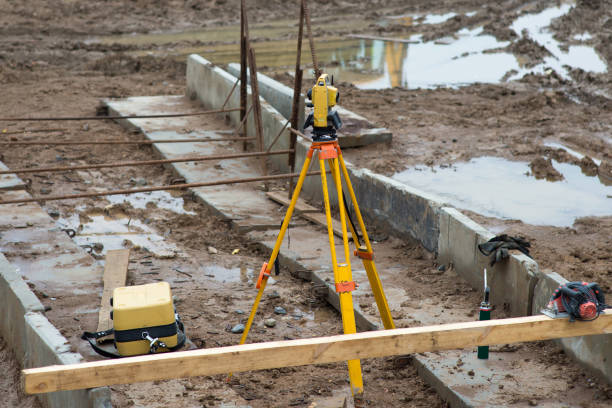
Land surveying is one of the most critical steps when it comes to buying, developing, or subdividing property. Whether you’re a homeowner preparing for renovation, a developer planning a new estate, or an investor considering property boundaries, understanding the land surveying process is essential.
This comprehensive guide explains how land surveying works in Melbourne, its various types, and how a land surveyor in Melbourne can assist with accurate boundary mapping and land subdivision in Melbourne.
What is Land Surveying?
Land surveying is the process of measuring and mapping land, including its boundaries, topography, and existing features. It helps property owners and developers understand the exact location of property lines, physical structures, and terrain levels.
In Melbourne, land surveying is essential for a wide range of applications such as property purchases, new construction, renovation, fencing, legal disputes, and land development. Surveyors use a combination of traditional tools and modern technology, including GPS, total stations, laser scanners, and drones, to deliver accurate results.
Why Hire a Land Surveyor in Melbourne?
A professional land surveyor in Melbourne offers valuable insights and ensures that your project complies with local laws and regulations. Here’s why land surveying is vital:
-
Avoid Boundary Disputes: Clearly defining property lines helps prevent conflicts with neighbours over fencing or construction.
-
Construction Planning: Architects and builders need accurate site data to design and build safely and legally.
-
Land Subdivision: If you plan to divide land into multiple lots, you’ll need surveying services and a subdivision plan.
-
Title Accuracy: Updating or confirming land title boundaries is a legal requirement in many property transactions.
-
Council Approvals: Most local councils require a detailed survey before issuing planning permits.
Common Types of Land Surveys in Melbourne
There are several types of land surveys available depending on your needs. Here are the most common:
1. Feature and Level Survey
This survey captures the physical features of a property—both natural and man-made. It includes details like buildings, trees, driveways, fences, and elevation levels. This is essential for architects and councils during the design and planning process.
2. Title Re-establishment Survey
A title re-establishment survey determines the true legal boundaries of a property. It’s commonly required when building close to boundaries or resolving disputes with neighbours over fences or encroachments.
3. Set Out Survey
Set out surveys guide construction by marking key points based on building plans. This ensures that structures are built in the correct location according to the approved design and council permits.
4. Subdivision Survey
Planning a land subdivision in Melbourne? This survey divides a single parcel of land into two or more lots. It’s used to develop residential or commercial lots, often requiring approvals from both council and the Titles Office.
5. AHD (Australian Height Datum) Level Survey
This survey provides elevation data referenced to a standard sea level (AHD). It’s useful for planning drainage, assessing flood risks, and building in low-lying areas.
The Land Surveying Process Explained
Hiring a land surveyor in Melbourne involves several steps. Here’s what the typical process looks like:
Step 1: Initial Consultation
You’ll meet with the surveyor to discuss your project goals—whether that’s building, subdividing, or resolving a legal issue.
Step 2: Property Research
The surveyor investigates historical title documents, previous surveys, council records, and planning restrictions to get a comprehensive understanding of your land.
Step 3: Site Survey
Using advanced instruments like GPS and laser technology, the surveyor collects on-site data. This includes measuring distances, capturing elevations, and noting features on the land.
Step 4: Data Processing and Drafting
The survey data is then processed with CAD software to produce a detailed survey plan. These drawings show boundary lines, features, contours, and easements if any.
Step 5: Documentation and Delivery
You’ll receive certified plans and documentation, which may be submitted to the local council, builders, or property professionals, depending on your needs.
In the case of subdivisions, the surveyor also handles submitting the plans to Land Use Victoria and liaising with relevant stakeholders like engineers and planners.
Land Subdivision in Melbourne: A Detailed Look
Land subdivision in Melbourne allows landowners to divide a larger property into smaller, separate lots. These lots can then be sold, leased, or developed individually.
To legally subdivide land, you must:
-
Prepare a Feature and Level Survey
-
Create a proposed Plan of Subdivision
-
Apply for a Planning Permit from the local council
-
Obtain certification from a licensed surveyor
-
Lodge plans with Land Use Victoria for registration
The subdivision process can be complex. It requires coordination with town planners, surveyors, engineers, and council authorities. That’s why working with an experienced land surveyor who understands Melbourne’s regulations is essential.
Cost of Land Surveying in Melbourne
Survey costs vary based on the size, location, and complexity of the job. Here’s a general estimate:
-
Feature and Level Survey: $800 to $1,500
-
Title Re-establishment Survey: $1,200 to $2,000
-
Set Out Survey: $800 to $2,000
-
Subdivision Survey: $3,000 to $15,000+
For subdivisions, additional costs may include council fees, planning permits, and legal registrations. It’s always advisable to request a detailed quote from a trusted land surveyor in Melbourne.
Choosing the Right Land Surveyor
When hiring a surveyor, consider the following:
-
Accreditation: Make sure they’re registered with the Surveyors Registration Board of Victoria.
-
Local Experience: Melbourne’s councils and suburbs have specific rules. A local expert makes the process smoother.
-
Comprehensive Services: Choose a surveyor who can handle all aspects—from feature surveys to final lodgements.
-
Clear Communication: Ensure your surveyor explains the process and keeps you informed every step of the way.
At Greater Melbourne Surveyors, we combine expertise with local knowledge to deliver professional and prompt surveying services.
Conclusion
Land surveying is more than just measuring land — it’s about clarity, accuracy, and compliance. Whether you need to verify boundaries, plan construction, or undertake a land subdivision in Melbourne, a professional land surveyor in Melbourne is your trusted advisor.
With the right guidance, you can avoid legal issues, speed up council approvals, and bring your property vision to life. Ready to get started? Reach out to Greater Melbourne Surveyors today.

